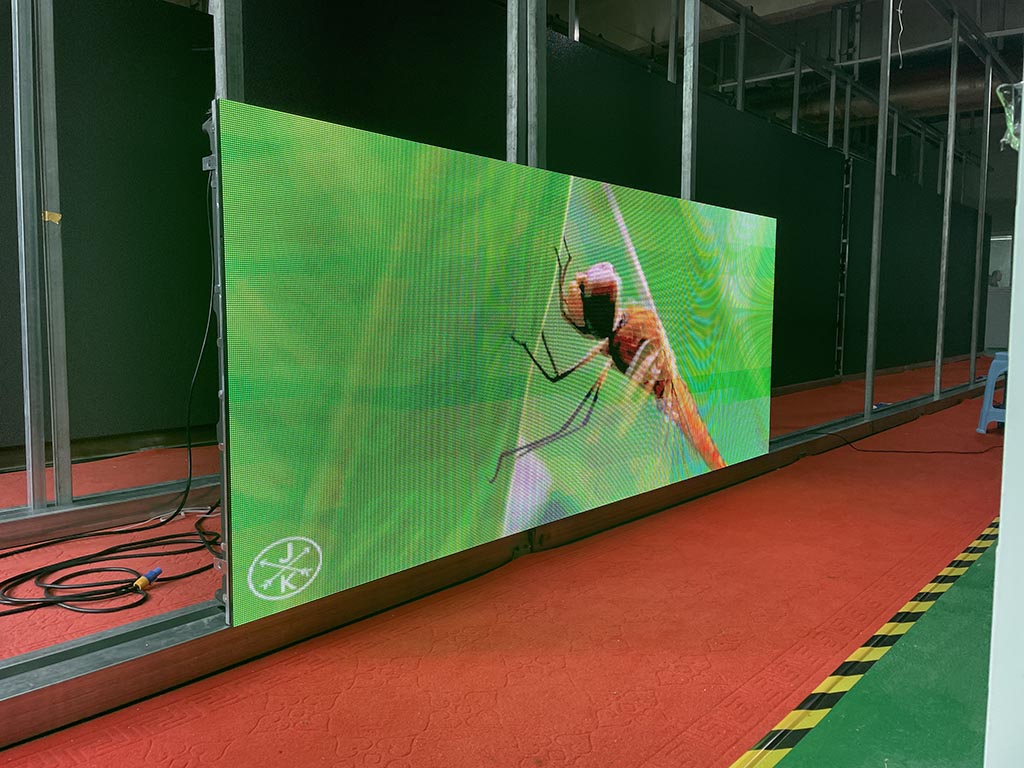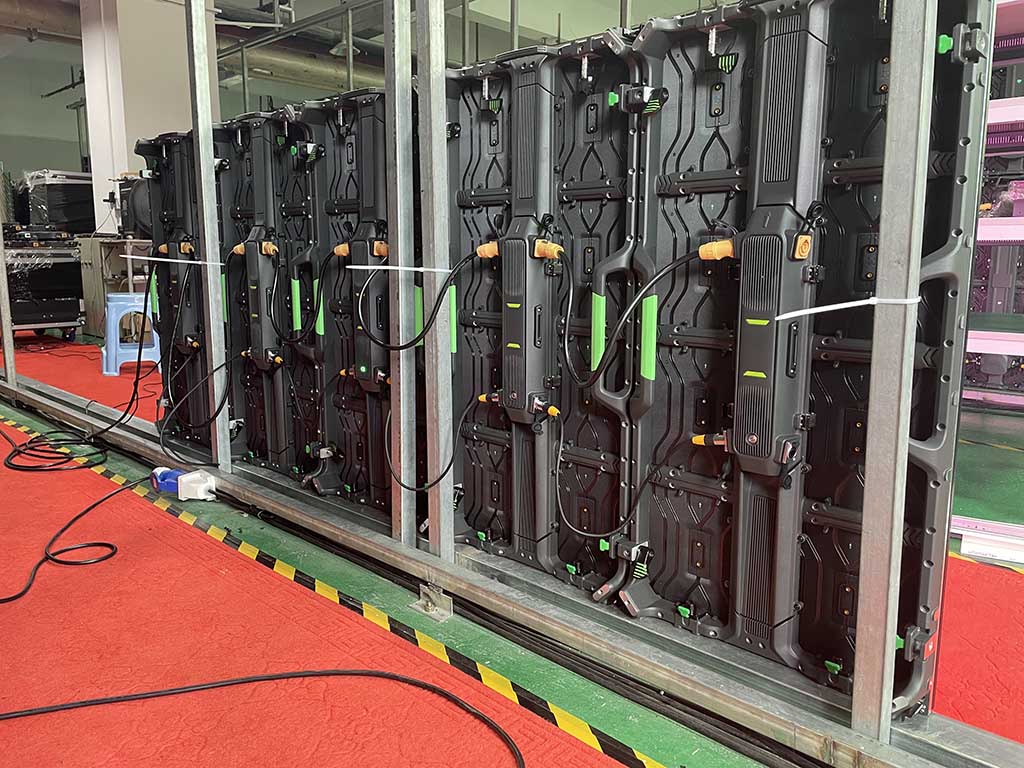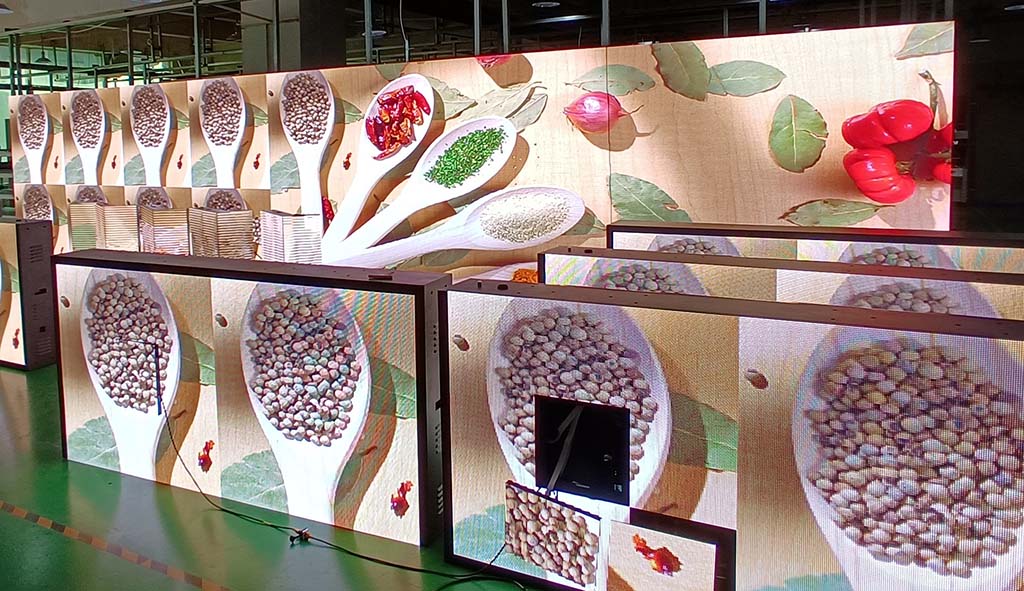Buying LED Display Screen: How to Identify the Quality of LED Display Screen?
In today’s digital world, LED displays have become an important part of the business and entertainment fields. However, as the types of LED displays on the market increase, it becomes increasingly important to choose a product with excellent quality. This article will introduce how to identify the quality of LED displays and help you make an informed decision when purchasing.
- What is LED Display Screen Quality?
- Importance of LED display screen quality
- What constitutes LED display screen quality?
- How to Identify the Quality of LED Display Screen?
- Flatness.
- Brightness and viewing angle.
- White balance effect.
- Color restoration.
- Whether there is mosaic or dead points on the display screen.
- Whether there is any color block on the display screen.
- Wavelength determines whether the color is pure and consistent.
- Power consumption per square
- Refresh rate
- About contrast
- Color temperature
- Indoor small-spacing display screens: low brightness and high gray level
- Standards and Certifications
- Indoor vs. Outdoor Displays
- Commercial vs. Consumer Displays
- Fixed Installation vs. Rental Displays
- How to Choose the Best LED Display Screen Manufacturers
What is LED Display Screen Quality?
When we talk about LED display screen quality, we refer to a set of characteristics that define the performance, durability, and visual excellence of an LED display. Understanding these qualities is essential for businesses looking to invest in top-notch LED screens, whether for advertising, event displays, or indoor signage. First and foremost, LED display screen quality is determined by the clarity and brightness of the display. High-quality LED screens offer vibrant colors and sharp images, which are crucial for capturing attention and delivering clear messages. The brightness of an LED screen, measured in nits, indicates how well the screen can be viewed in different lighting conditions, from dim indoor settings to bright outdoor environments. Another key factor is the screen’s resolution. The resolution refers to the number of pixels in the display, and higher resolutions provide finer details and smoother visuals. For instance, a screen with a resolution of 1920×1080 pixels (Full HD) will have a different visual impact compared to one with 3840×2160 pixels (4K). For business applications, especially in industries like retail or entertainment, higher resolution can significantly enhance customer engagement. Durability is also a critical aspect of LED display screen quality. High-quality LED displays are built to withstand various environmental conditions, including temperature fluctuations, humidity, and potential physical impacts. This durability ensures that the screens can maintain their performance and appearance over time, reducing maintenance costs and downtime. Moreover, the quality of the materials and components used in manufacturing LED screens plays a significant role. Premium LED displays often use high-grade LEDs, robust circuit boards, and advanced protective coatings. These elements contribute to longer lifespan, better heat dissipation, and overall improved performance. In addition, the quality of the image processing technology embedded in the LED screen can affect its performance. Advanced image processing can enhance color accuracy, contrast, and overall visual appeal. Features like high refresh rates and HDR (High Dynamic Range) support are markers of high-quality LED displays. Lastly, ease of installation and maintenance is an essential aspect of LED display screen quality. High-quality LED screens are designed to be user-friendly, with modular designs that allow for easy assembly and disassembly. This feature is particularly important for businesses that may need to frequently move or update their displays. In summary, LED display screen quality encompasses brightness, resolution, durability, material quality, image processing technology, and ease of maintenance. By focusing on these attributes, businesses can ensure they invest in LED displays that offer superior performance and longevity.
Importance of LED Display Screen Quality
Importance of Quality in LED Displays
The importance of LED display screen quality cannot be overstated. In a competitive market, high-quality LED screens can be a game-changer for businesses. These screens serve as the visual face of a company, and their quality directly influences brand perception. A high-quality display ensures that the visual content is not only clear and bright but also engaging and memorable. This is crucial for attracting and retaining customers, especially in industries such as retail, entertainment, and advertising where visual impact is paramount.
Impact on User Experience
The quality of an LED display screen significantly impacts the user experience. High-quality LED screens offer vibrant colors, sharp images, and consistent brightness, which enhance the viewer’s experience. For instance, in a retail environment, an engaging LED display can attract potential customers, highlight key products, and drive sales. In contrast, a low-quality display with poor resolution and dull colors can deter customers and negatively affect their perception of the brand. Thus, investing in high-quality LED displays is essential for creating a positive and impactful user experience.
Long-term Benefits of High-quality Displays
The long-term benefits of high-quality LED displays are substantial. Firstly, high-quality displays tend to have a longer lifespan, reducing the need for frequent replacements and thereby lowering total cost of ownership. They are built to withstand various environmental conditions and resist wear and tear, which ensures reliable performance over time. Secondly, high-quality LED displays often come with advanced features such as energy efficiency and better heat dissipation, which can result in significant cost savings in terms of power consumption and cooling requirements. Additionally, the superior visual performance of high-quality LED displays can enhance customer engagement and satisfaction, leading to increased sales and brand loyalty. For businesses, this means a higher return on investment (ROI) as the initial higher cost of high-quality displays is offset by the benefits they bring in terms of durability, performance, and customer attraction.
What Constitutes LED Display Screen Quality?
To truly understand what constitutes LED display screen quality, it’s essential to delve into the key components and attributes that define a high-performing LED screen. These components work together to ensure that the display not only looks good but also performs reliably under various conditions.
LED Chips and Modules
The foundation of any LED display is the LED chips and modules. High-quality LED chips are crucial for producing bright, consistent colors and ensuring long-term durability. Leading manufacturers, like Nichia, Cree, and Epistar, are known for producing high-grade LED chips that offer superior performance. These chips are assembled into modules, which are then arranged to form the full display. The precision and quality of these components directly impact the overall visual quality and reliability of the screen.
Resolution and Pixel Pitch
The resolution and pixel pitch of an LED display are critical determinants of image clarity and detail. Resolution refers to the total number of pixels in the display, while pixel pitch is the distance between individual pixels. A smaller pixel pitch means higher pixel density, which translates to finer detail and smoother images. For example, an LED screen with a pixel pitch of 1.5mm will have a higher resolution and sharper image than one with a 5mm pixel pitch, making it ideal for close-up viewing in settings like control rooms or retail displays.
Brightness and Contrast Ratio
Brightness and contrast ratio are fundamental aspects of LED display quality. Brightness, measured in nits, determines how well the screen can be seen in different lighting conditions, especially in bright outdoor environments. High-quality LED screens typically offer brightness levels exceeding 1000 nits for indoor displays and up to 5000 nits or more for outdoor displays. Contrast ratio, the difference between the darkest blacks and the brightest whites, enhances the display’s depth and vibrancy, making images and videos more dynamic and engaging.
Color Accuracy and Uniformity
Color accuracy and uniformity are crucial for delivering true-to-life visuals. High-quality LED displays are calibrated to ensure that colors are consistent and accurate across the entire screen. This involves sophisticated color matching and balancing technologies that prevent color shifts and ensure uniform brightness and color across different viewing angles. Accurate color reproduction is essential for applications where precise visuals are critical, such as in broadcast studios, medical imaging, and high-end retail displays.
Refresh Rate and Viewing Angle
The refresh rate and viewing angle are additional factors that contribute to LED display quality. A high refresh rate, typically 120Hz or higher, ensures smooth motion rendering, which is essential for applications involving video playback or dynamic content. The viewing angle refers to the maximum angle at which the display can be viewed with acceptable visual performance. High-quality LED screens offer wide viewing angles, ensuring that the content remains clear and vibrant even when viewed from the sides.
Build Quality and Reliability
Lastly, build quality and reliability are paramount. High-quality LED displays are constructed using durable materials and components that can withstand environmental stressors such as heat, humidity, and physical impacts. Features like robust housing, advanced heat dissipation systems, and protective coatings contribute to the longevity and reliability of the display. Ensuring that the LED screen maintains its performance over time with minimal maintenance is a key aspect of quality.
How to Identify the Quality of LED Display Screen?
When it comes to purchasing an LED display screen, understanding how to identify the quality of LED display screen is crucial. Whether for business presentations, advertising, or entertainment, a high-quality LED display screen enhances the overall experience and provides long-term value. Here, we will delve into several key factors that help in assessing the quality of LED displays, ensuring you make an informed decision and avoid common pitfalls.
Flatness
The surface flatness of the display screens should be within ±1mm to prevent distortion of the display image. Uneven screens can cause blind spots from certain viewing angles, distorting the visual experience. Flatness is largely determined by the manufacturing technique. High-quality manufacturing ensures a smooth, even surface, which is essential for a clear and consistent display. When inspecting flatness, look for any noticeable curves or dips on the surface of the screen. These imperfections can affect not only the aesthetic appeal but also the functionality, leading to uneven color and brightness distribution.
Brightness and Viewing Angle
The brightness of indoor full-color display screens should exceed 800 cd/m², while outdoor displays should exceed 1500 cd/m² to ensure clear visibility under various lighting conditions. Brightness is crucial for displaying vivid and dynamic images, especially in brightly lit environments. The viewing angle, which determines how well the display can be seen from different positions, should be as wide as possible. The quality of the LED dies and the packaging methods used play a significant role in achieving optimal brightness and viewing angles. A broader viewing angle ensures that the screen is visible to a wider audience without losing image clarity or color accuracy.
White Balance Effect
A good white balance is crucial for accurate color representation. Ideally, the ratio of red to green to blue (the three primary colors) should be 1:4.6:0.16. Any deviation from this can cause the white to appear tinted with blue or yellow. The white balance is primarily determined by the display’s control system and the quality of the LED dies. Maintaining proper white balance ensures that the colors displayed are true to the original content, providing a more natural and pleasing visual experience. When evaluating white balance, look for any signs of color tinting, which indicate an imbalance that could affect the overall color fidelity.
Color Restoration
Color restoration refers to the ability of the display to reproduce colors that are true to the source image. High-quality LED displays should have excellent color consistency and fidelity, ensuring realistic and vibrant visuals. This aspect is critical for applications where accurate color representation is paramount, such as in advertising, broadcasting, and digital art displays. A display with poor color restoration can make images look dull and lifeless, diminishing the impact of the visual content. Therefore, it is essential to choose LED displays that offer superior color restoration capabilities.
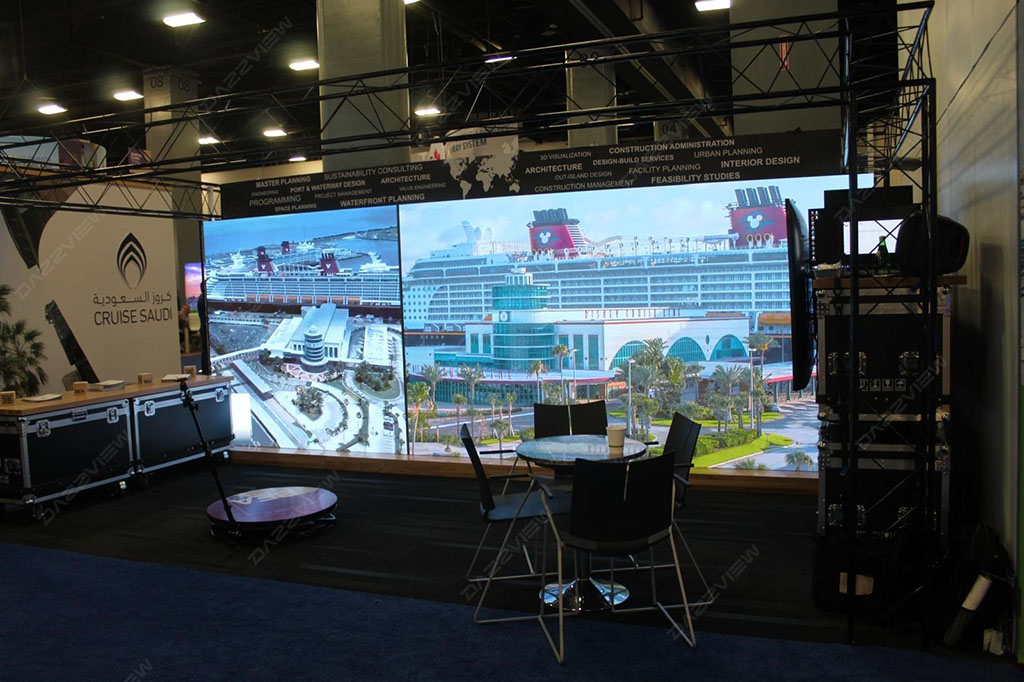
Mosaic or Dead Points
Mosaic refers to small squares that remain bright or dark, often due to module failure. Dead points are individual LEDs that remain permanently on or off. Both issues are typically caused by poor quality connectors or LED dies. High-quality screens should have minimal to no mosaic or dead points. These defects can significantly affect the visual quality and user experience, making the display appear unprofessional and unreliable. Regular quality checks and maintenance can help identify and address these issues early, ensuring the longevity and performance of the LED display.
Color Block
Color blocks are areas of noticeable color difference between adjacent modules. This issue is usually due to poor control systems, low gray levels, or low scanning frequencies. High-quality LED displays should have smooth color transitions without visible blocks. Color blocks can disrupt the overall visual harmony of the display, making it look patchy and inconsistent. Ensuring a uniform color display across all modules is essential for maintaining a seamless and attractive visual output, especially for large-scale displays used in advertising and public information systems.
Wavelength Consistency
The wavelength of the LEDs should be consistent to ensure pure and accurate colors. High-quality displays achieve this through precise manufacturing processes. You can check this by displaying solid colors (red, green, blue, and white) and ensuring there are no noticeable color deviations. Consistent wavelength ensures that the colors remain true and vibrant over time, without drifting or fading. This is particularly important for displays used in professional and high-visibility settings, where color accuracy is critical. Checking for wavelength consistency can help in selecting displays that offer long-term reliability and visual appeal.
Power Consumption per Square Meter
This refers to the power usage of the display, typically measured in watts per square meter. High-quality displays offer efficient power consumption, which can be assessed by calculating the power supply behind each panel and their total output. Lower power consumption translates to cost savings in the long run and a reduced environmental footprint. Efficient power usage also indicates advanced technology and superior design, making high-quality LED displays a more sustainable and economical choice for businesses. Understanding the power consumption metrics can aid in selecting displays that balance performance with energy efficiency.
Refresh Rate
The refresh rate, measured in Hertz (Hz), indicates how many times per second the display updates its image. A high refresh rate (above 300Hz for general viewing and 600Hz for filming) ensures smooth visuals without flickering, which is essential for both live viewing and recording. High refresh rates are crucial for displays used in dynamic environments such as concerts, sports events, and live broadcasts. They enhance the viewing experience by providing crisp, clear images free from motion blur. Ensuring an adequate refresh rate is essential for achieving professional-quality visuals that can handle fast-moving content without compromise.
Contrast Ratio
Contrast ratio measures the difference between the brightest whites and the darkest blacks a display can show. Higher contrast ratios provide more vivid and dynamic images, which are more engaging and easier to view in various lighting conditions. This is especially important in environments with variable lighting, such as outdoor displays or stages. High contrast ratios contribute to better image depth and detail, enhancing the overall visual impact. When choosing an LED display, consider the contrast ratio to ensure it meets the specific needs of your application, providing clear and compelling visuals in all conditions.
Color Temperature
Color temperature affects how colors appear on the screen. A color temperature between 6500K and 8000K is typically suitable for direct viewing, while around 5500K is ideal for television broadcasts. Correct color temperature ensures accurate and appealing color reproduction. Adjusting color temperature according to the environment and application can significantly enhance the visual experience, ensuring that images look natural and engaging. High-quality LED displays allow for precise color temperature adjustments, providing flexibility for different uses and settings. This capability is particularly valuable in professional displays used for broadcasting, advertising, and presentations.
Indoor Small-spacing Display Screens: Low Brightness and High Gray Level
For indoor small-spacing LED displays, maintaining low brightness without losing gray levels is crucial. This ensures high-quality visuals without causing eye strain, especially in dark environments. High-quality small-spacing displays achieve a balance of low brightness and high gray levels, making them comfortable for prolonged viewing. This feature 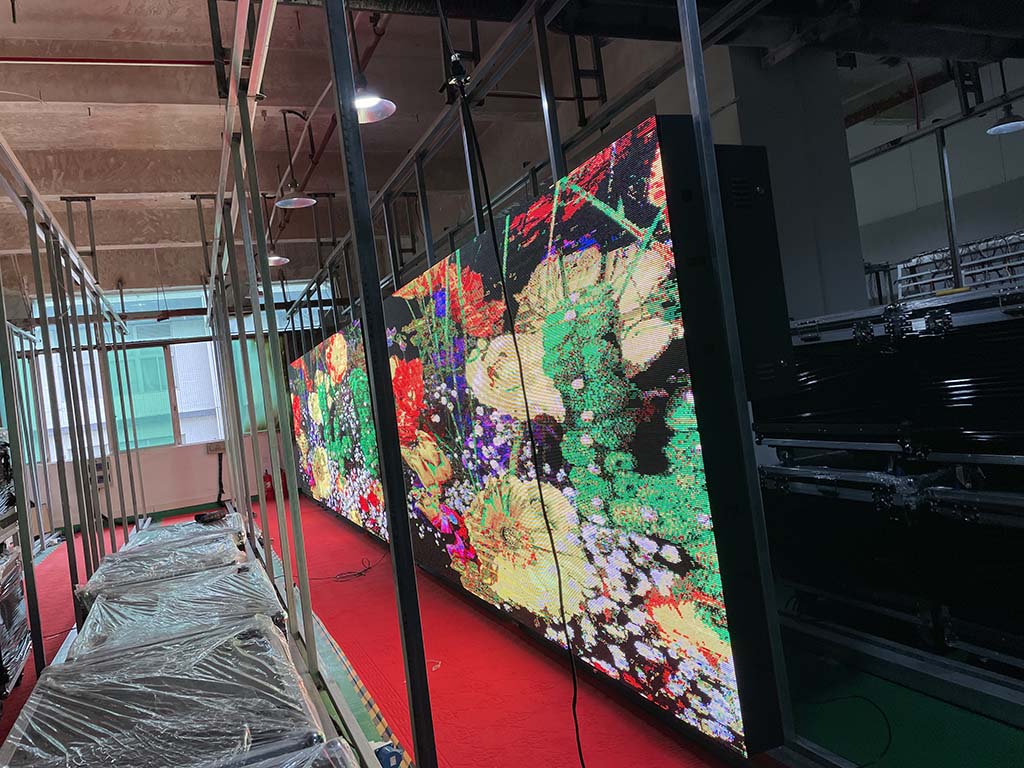
Standards and Certifications
Industry Standards
LED display screens are subject to various industry standards to ensure quality and performance. These standards are set by organizations such as the International Organization for Standardization (ISO) and the American National Standards Institute (ANSI). They cover aspects like image quality, safety, and environmental impact. Adhering to these standards is crucial for manufacturers to ensure their products meet the required quality levels and comply with regulations.
Certifications and Labels
Several certifications and labels are commonly found on LED display screens, indicating their compliance with specific standards and regulations. These certifications include Energy Star, TUV, and others. Each certification signifies different aspects of quality, such as energy efficiency, safety, and environmental impact. Understanding these certifications can help consumers make informed decisions when choosing LED display screens.
Energy Star Certification
Energy Star is a widely recognized certification for energy efficiency. LED display screens with Energy Star certification meet strict energy efficiency guidelines set by the Environmental Protection Agency (EPA). This certification indicates that the display consumes less energy than non-certified models, resulting in lower electricity bills and reduced environmental impact.
TUV Certification
TUV certification is issued by TÜV SÜD, a leading independent testing and certification organization. TUV certification ensures that the LED display screen meets specific quality and safety standards. This certification is particularly important for businesses looking to ensure the safety and reliability of their display screens.
Indoor vs. Outdoor Displays
Key Quality Considerations for Indoor Displays
Indoor LED displays require different quality considerations compared to outdoor displays due to the controlled environment. Some key considerations include:
- Resolution: Higher resolutions are preferred for indoor displays to ensure sharp and clear images, especially for close viewing distances.
- Color Accuracy: Indoor displays should accurately reproduce colors to ensure the intended content is displayed correctly.
- Brightness: While indoor displays do not require as high brightness levels as outdoor displays, they should still be bright enough for clear visibility in indoor lighting conditions.
- Refresh Rate: A higher refresh rate is desirable for indoor displays to prevent flickering and ensure smooth motion in videos.
- Contrast Ratio: A high contrast ratio enhances the visual experience by providing deep blacks and bright whites, improving image clarity and detail.
Key Quality Considerations for Outdoor Displays
Outdoor LED displays face more challenging conditions, requiring specific quality considerations to ensure durability and performance. Some key considerations include:
- Weather Resistance: Outdoor displays should be able to withstand various weather conditions, including rain, snow, and extreme temperatures.
- Brightness: Outdoor displays require higher brightness levels to combat sunlight and ensure visibility in bright outdoor environments.
- IP Rating: A high IP rating indicates that the display is protected against dust and water ingress, important for outdoor use where exposure to the elements is likely.
- Temperature Control: Outdoor displays should have effective temperature control mechanisms to prevent overheating or freezing, which can damage the display components.
- Visibility: Outdoor displays should have wide viewing angles and anti-glare features to ensure visibility from various angles and in different lighting conditions.
Commercial vs. Consumer Displays
Commercial and consumer LED displays serve different purposes and therefore have different quality requirements and standards. Understanding these differences can help you make an informed decision when choosing between the two.
Quality Requirements for Commercial Displays
Commercial displays are designed for use in professional settings such as retail stores, corporate offices, and public spaces. They are expected to meet higher standards of performance, durability, and reliability compared to consumer displays. Some key quality requirements for commercial displays include:
- 24/7 Operation: Commercial displays are often required to operate continuously without interruption. They should be built to withstand long hours of operation without overheating or malfunctioning.
- Enhanced Connectivity: Commercial displays often require multiple connectivity options to accommodate various devices and sources. They should support HDMI, DisplayPort, and other standard interfaces.
- Remote Management: Commercial displays should have built-in features for remote monitoring and management, allowing for easy control and maintenance.
- Content Protection: Commercial displays may require content protection features to prevent unauthorized access and distribution of sensitive information.
- Customization Options: Commercial displays should offer customization options such as bezel size, mounting options, and color calibration to meet specific installation requirements.
Quality Requirements for Consumer Displays
Consumer displays are designed for personal use in homes, entertainment centers, and gaming setups. They are generally more affordable but may not offer the same level of performance and features as commercial displays. Some key quality requirements for consumer displays include:
- Cost-Effective: Consumer displays are designed to be cost-effective, making them suitable for budget-conscious consumers.
- Good Image Quality: While consumer displays may not require the same level of image quality as commercial displays, they should still provide clear and vibrant images for an enjoyable viewing experience.
- Standard Connectivity: Consumer displays typically offer standard connectivity options such as HDMI and USB, but may not have the same level of connectivity as commercial displays.
- User-Friendly Features: Consumer displays often come with user-friendly features such as built-in speakers, easy-to-use controls, and preset display modes for different viewing scenarios.
- Warranty and Support: Consumer displays may come with limited warranties and support compared to commercial displays, as they are intended for personal use.
Fixed Installation vs. Rental Displays
Specific Quality Aspects for Fixed Installations
Fixed installation LED displays are designed for permanent installations in locations such as retail stores, airports, and stadiums. They require specific quality aspects to ensure long-term performance and reliability. Some key considerations for fixed installations include:
- Build Quality: Fixed installation displays should be well-built and durable to withstand long-term use without degradation in performance.
- Image Quality: High image quality is essential for fixed installations to ensure clear and vibrant visuals for advertising and information display.
- Reliability: Fixed installation displays should be reliable, with minimal downtime and maintenance requirements.
- Customization Options: Fixed installation displays may require customization options such as size, shape, and resolution to fit specific installation requirements.
- Integration: Fixed installation displays should be easy to integrate with existing systems and infrastructure.
Quality Considerations for Rental Displays
Rental LED displays are designed for temporary installations for events, trade shows, and exhibitions. They require specific quality considerations to ensure durability and ease of setup and teardown. Some key considerations for rental displays include:
- Portability: Rental displays should be lightweight and easy to transport to different locations.
- Quick Setup: Rental displays should be easy to set up and teardown to minimize installation time.
- Durability: Rental displays should be durable to withstand the rigors of transportation and multiple installations.
- Serviceability: Rental displays should be easy to service and maintain, with quick access to components for replacement if needed.
- Compatibility: Rental displays should be compatible with a wide range of source devices and signal formats.
How to Choose the Best LED Display Screen Manufacturers
Choosing the best LED display screen manufacturer is a critical decision that can impact the success of your project. Here are some key factors to consider when evaluating manufacturers:
1. Reputation and Experience
Look for manufacturers with a strong reputation for producing high-quality products and providing excellent customer service. An experienced manufacturer is more likely to have the expertise and resources to meet your needs.
2. Product Quality
Evaluate the quality of the LED display screens produced by the manufacturer. Look for manufacturers that use high-quality materials and components to ensure durability and performance.
3. Technology and Innovation
Choose a manufacturer that invests in technology and innovation to stay ahead of the competition. Look for manufacturers that offer cutting-edge features and capabilities in their products.
4. Customization Options
Consider your specific requirements and look for a manufacturer that offers customization options. This could include custom sizes, shapes, and configurations to fit your project needs.
5. Manufacturing Process
Learn about the manufacturer’s manufacturing process and quality control measures. Look for manufacturers that follow strict quality standards and have a robust quality control process in place.
6. Customer Service and Support
Choose a manufacturer that provides excellent customer service and support. Look for manufacturers that offer warranties, technical support, and assistance with installation and maintenance.
7. Price and Value
Compare prices from different manufacturers, but also consider the overall value. Look for manufacturers that offer competitive pricing without compromising on quality or service.
8. Certifications and Compliance
Check if the manufacturer has relevant certifications and complies with industry standards. This can help ensure that their products meet quality and safety requirements.
9. Reviews and References
Read reviews and testimonials from other customers to get an idea of the manufacturer’s reputation. Ask for references and speak to past clients to learn about their experiences.
10. Environmental Responsibility
Consider the manufacturer’s commitment to environmental responsibility. Look for manufacturers that use sustainable practices and offer energy-efficient products.
Conclusion
Through the guidance of this article, you should now be able to choose a high-quality LED display with more confidence. As the world’s leading LED display manufacturer, Dazzview offers an extensive product line and quality services to ensure your display needs are met. Please visit our global website at https://www.dazzview.com/ to learn more about our information and products. Choose Dazzview, choose quality and trust.
Read More:
FHD vs LED Screen: What’s the Difference?
 Jay
Jay
 Niki
Niki
 Selena
Selena

